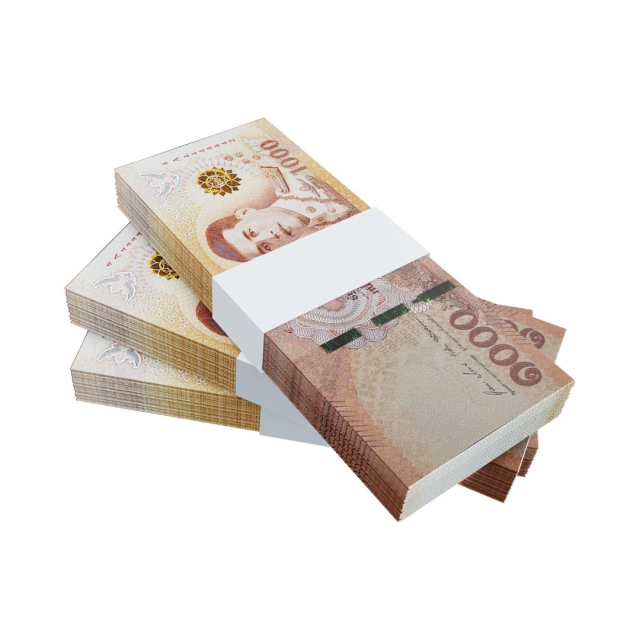Thailand, the land of smiles, is known for its rich culture, stunning landscapes and delicious cuisine. However, beyond its natural beauty and tourist attractions, there is one crucial aspect that defines the economy and commerce in this Southeast Asian country: its currency.
The Thai Baht: A Historical Look
The Thai Baht, a currency with a rich and deep history, is more than just a unit of monetary measurement in Thailand. Its evolution over the centuries reflects the economic, political and social transformations that have shaped the country. It dates back to the days of Ayutthaya, when the baht was a measure of weight used in trade with neighboring nations, demonstrating from its beginnings the importance of commercial exchange in the region.
During the 19th century, under the reign of King Rama IV, the baht established itself as the official currency of the Kingdom of Siam, marking a turning point in its history. This transition period represented the adoption of a modern monetary system and laid the foundation for the country's economic development in the future.
However, the baht has not been without its challenges. During World War II, Thailand experienced a severe shortage of foreign currency, leading to the issuance of low-denomination banknotes and the use of gambling chips as temporary currency. This turbulent time demonstrated the resilience of the baht in the face of adversity and its ability to adapt to difficult situations.
Another pivotal moment in the history of the baht was the Asian financial crisis of 1997, which shook the foundations of the Thai economy and tested the stability of its currency. The devaluation of the baht triggered a series of devastating economic consequences, but also served as a catalyst for economic and financial reforms that strengthened the Thai economy in the long term.
The Baht Today: Characteristics and Value
Today, the Thai Baht is not only the official currency of Thailand, but is also a key indicator of the country's economic stability and growth. Issued and regulated by the Bank of Thailand, the baht comes in a variety of denominations in the form of banknotes and coins, each with its own distinctive design that reflects the country's rich cultural heritage.
The stability of the baht in the global economic landscape is largely due to the prudent fiscal and monetary policies implemented by the Thai authorities. The central bank plays a crucial role in managing the money supply, controlling interest rates and intervening in currency markets as necessary to maintain financial stability.
Additionally, the value of the baht is influenced by a variety of factors, including changes in interest rates, inflation, government policy, and world economic events. Despite these fluctuations, the baht has maintained a general trend of stability in recent years, making it an attractive option for both domestic and international investors and traders.
Internationally, the baht plays an important role as a reserve currency and medium of exchange in international trade. Its acceptance and demand in global markets have contributed to Thailand's economic growth and strengthened its position in the global economy.
The Socioeconomic Impact of the Baht
The socioeconomic impact of the Thai Baht extends far beyond its function as a simple monetary unit. As the tangible symbol of Thailand's progress and economic stability, the Baht influences all facets of life in the country.
Firstly, the Baht plays a vital role in domestic and international trade. As the official currency of Thailand, it facilitates business transactions within the country and with foreign trading partners. The strength and stability of the Baht are crucial to maintaining the confidence of investors and traders, thereby promoting economic growth and job creation.
Furthermore, the value of the Baht directly affects the purchasing power of Thai citizens. A strong currency can improve living standards by making imported goods more affordable and keeping inflation under control. On the other hand, a weak currency can increase the cost of living and negatively affect the economic well-being of the population.
The Baht also plays a crucial role in the tourism industry, one of the pillars of the Thai economy. A strong Baht can make Thailand a more attractive destination for foreign tourists by making prices more affordable. This in turn drives the growth of the tourism sector, generating income and employment for the local population.
Internationally, the Baht serves as an indicator of Thailand's economic health and its position in the global economy. A stable and valued currency strengthens the country's credibility in global financial markets, attracting foreign investments and fostering international economic cooperation.
Whether you're exploring the bustling markets of Bangkok, relaxing on the picturesque beaches of southern Thailand, or marveling at the ancient temples of Chiang Mai, the baht will always be present, reminding us of the currency's importance in our lives and in the world we live in. around us. In Thailand, true wealth is not measured only in bahts, but in shared experiences, sincere smiles and unforgettable moments.
